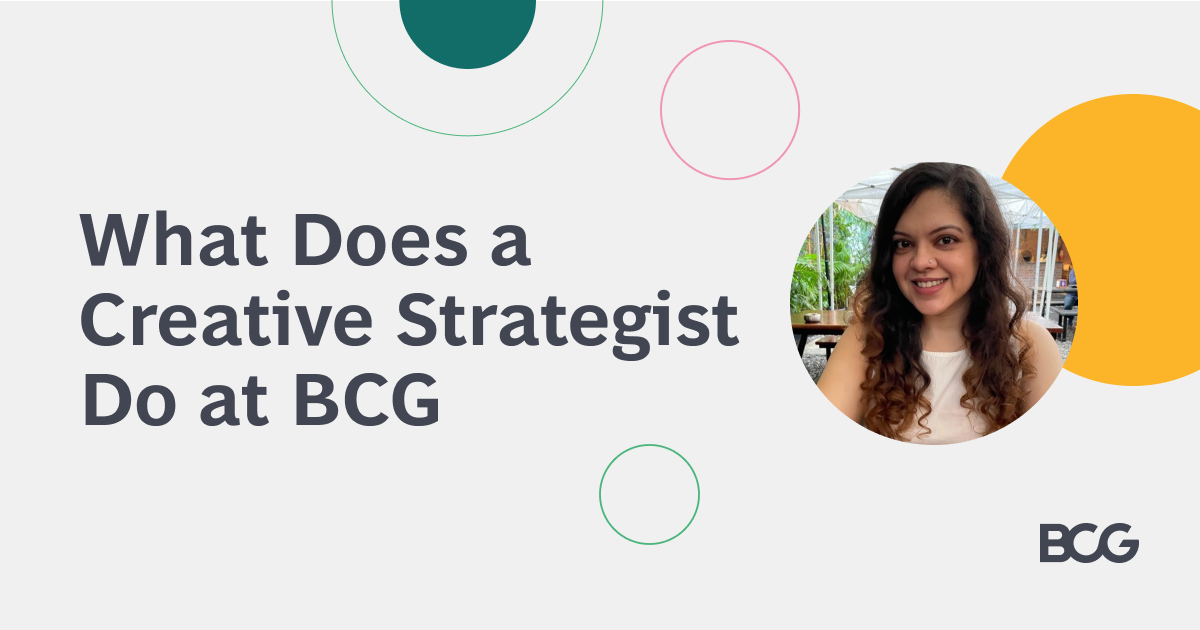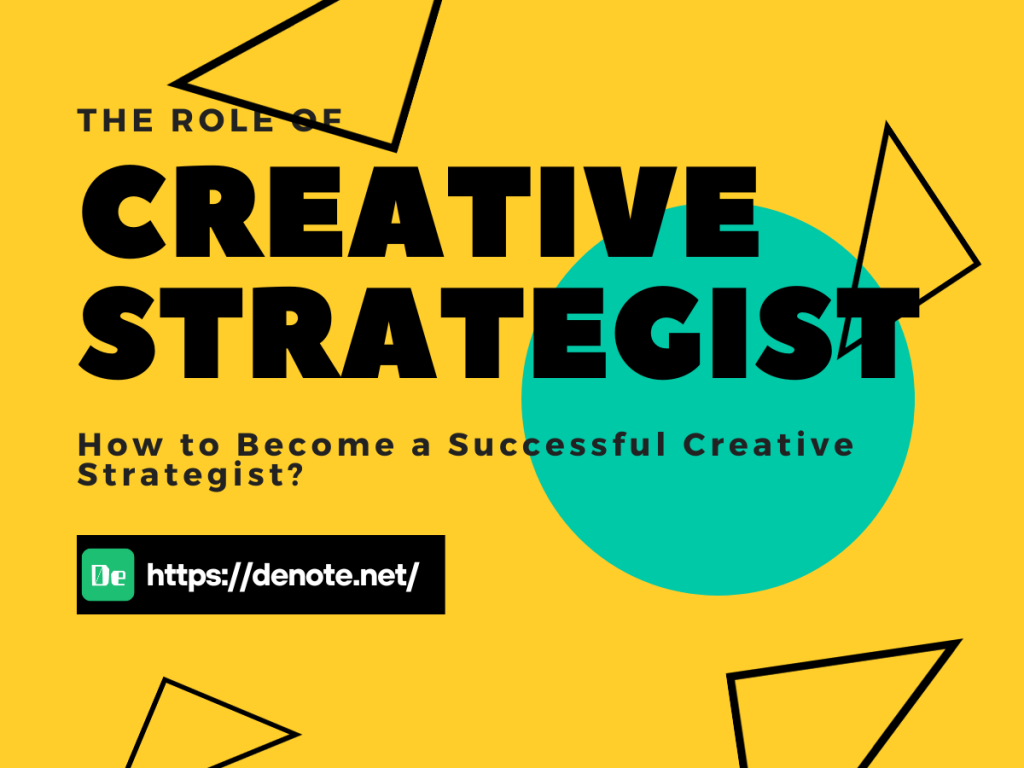In today’s dynamic marketing landscape, creative strategist jobs are at the forefront of driving innovation and shaping brand narratives. These professionals possess a unique blend of creativity, analytical thinking, and communication skills, enabling them to develop and execute impactful marketing campaigns that resonate with audiences and achieve business objectives.
As the demand for creative strategists continues to soar, this comprehensive guide delves into the intricacies of this exciting career path, exploring key responsibilities, industry trends, educational requirements, and much more. Whether you’re an aspiring creative strategist or seeking to enhance your knowledge, this resource provides valuable insights and practical advice to help you succeed in this dynamic field.
Job Market Overview

The creative strategist job market is experiencing a surge in demand due to the increasing emphasis on strategic and innovative marketing campaigns. With the rapid evolution of digital technologies, businesses recognize the need for professionals who can develop and execute creative strategies that drive business outcomes.The growth projections for creative strategists are promising.
According to the U.S. Bureau of Labor Statistics, employment of advertising, promotions, and marketing managers is projected to grow 10% from 2021 to 2031, faster than the average for all occupations. This growth is driven by the increasing use of digital marketing and the need for businesses to develop creative and innovative strategies to reach their target audiences.In-demand skills for creative strategists include:
- Strategic thinking and planning
- Creativity and innovation
- Digital marketing expertise
- Data analysis and interpretation
- Project management
- Communication and presentation skills
Key Responsibilities and Duties
The role of a creative strategist encompasses a wide range of responsibilities, all centered around developing and executing innovative marketing campaigns that effectively engage target audiences and drive business results.
These responsibilities can be broadly categorized into three main areas: concept development, brand storytelling, and campaign execution.
Concept Development
Concept development lies at the heart of the creative strategist’s role. It involves brainstorming original and innovative ideas for marketing campaigns that align with the brand’s overall marketing objectives and target audience.
- Brainstorming ideas: Creative strategists often begin by conducting brainstorming sessions with their team to generate a wide range of ideas for potential marketing campaigns.
- Conducting research: To ensure that their ideas are grounded in reality, creative strategists conduct thorough research on the target audience, market trends, and competitive landscape.
- Creating mood boards: Mood boards are a visual representation of the overall concept and tone of a marketing campaign. Creative strategists create mood boards to communicate their ideas to the team and stakeholders.
Brand Storytelling
Brand storytelling is another key responsibility of creative strategists. They are responsible for crafting compelling narratives that resonate with target audiences and build strong emotional connections with the brand.
- Writing brand stories: Creative strategists write compelling brand stories that capture the essence of the brand and its values. These stories are often used in marketing materials, such as commercials, website content, and social media posts.
- Developing brand characters: In some cases, creative strategists may develop brand characters that represent the brand and its personality. These characters can be used in marketing campaigns to create a more personal and engaging experience for target audiences.
- Creating brand guidelines: Creative strategists also develop brand guidelines that define the brand’s visual identity, tone of voice, and overall messaging. These guidelines ensure that all marketing materials are consistent and aligned with the brand’s overall strategy.
Campaign Execution
Once a marketing campaign concept has been developed, creative strategists are responsible for overseeing its execution from start to finish.
- Managing budgets: Creative strategists work closely with the marketing team to manage the budget for the marketing campaign. This includes allocating funds to different aspects of the campaign, such as creative development, media placement, and analytics.
- Coordinating with vendors: Creative strategists often work with a variety of vendors, such as advertising agencies, production companies, and media outlets, to execute the marketing campaign. They are responsible for coordinating with these vendors to ensure that the campaign is executed on time and within budget.
- Tracking results: Creative strategists track the results of marketing campaigns to measure their effectiveness and make adjustments as needed. They use a variety of metrics to track results, such as website traffic, social media engagement, and sales.
– Provide specific examples of how creativity, analytical thinking, and communication abilities are applied in the role of a creative strategist.
A creative strategist is responsible for developing and executing marketing campaigns that are both creative and effective. This requires a unique blend of creativity, analytical thinking, and communication skills.
Here are a few specific examples of how these skills are applied in the role of a creative strategist:
Creativity
- Brainstorming new ideas for marketing campaigns
- Developing creative concepts for advertisements, social media posts, and other marketing materials
- Working with designers and copywriters to bring creative concepts to life
Analytical Thinking
- Analyzing market research data to identify target audiences and develop marketing strategies
- Tracking the results of marketing campaigns and making adjustments as needed
- Using data to inform creative decisions
Communication
- Presenting creative concepts to clients and stakeholders
- Working with a team of creative professionals to develop and execute marketing campaigns
- Communicating the value of creative marketing to clients and stakeholders
Education and Training
The educational background of creative strategists varies, but most hold at least a bachelor’s degree in a field related to marketing, communications, design, or a similar area. Some may also have a master’s degree or higher.
Relevant degrees include:
- Bachelor of Arts (B.A.) in Marketing
- Bachelor of Science (B.S.) in Communications
- Bachelor of Fine Arts (B.F.A.) in Graphic Design
- Master of Business Administration (MBA) with a focus on Marketing
- Master of Arts (M.A.) in Communications
In addition to a formal education, creative strategists may also benefit from industry-specific certifications and courses. These can provide them with specialized knowledge and skills in areas such as digital marketing, social media marketing, and content marketing.
Certifications
Some relevant certifications for creative strategists include:
- Certified Marketing Professional (CMP)
- Digital Marketing Certified Associate (DMCA)
- Google Analytics Individual Qualification
- HubSpot Inbound Marketing Certification
Career Path and Advancement
The career path for creative strategists is dynamic and offers ample opportunities for growth and advancement. With experience and proven expertise, they can ascend to leadership roles and specialize in various areas of expertise.
Leadership Roles
As creative strategists gain experience and demonstrate leadership qualities, they may transition into management positions, such as:
- Creative Director
- Director of Strategy
- Vice President of Marketing
Specialized Areas of Expertise
Creative strategists can also specialize in specific areas of expertise, such as:
- Brand Strategy
- Digital Marketing
- Social Media Marketing
- Content Marketing
- User Experience (UX) Design
Industry Sectors

Creative strategists are employed in a wide range of industry sectors, each presenting unique challenges and opportunities.
Understanding the specific demands of each sector is crucial for effective creative strategy development.
Key Industry Sectors
The following table summarizes the key industry sectors where creative strategists are employed, along with their respective challenges and opportunities.
| Industry Sector | Challenges | Opportunities |
|---|---|---|
| Advertising and Marketing |
|
|
| Technology |
|
|
| Retail |
|
|
| Healthcare |
|
|
| Education |
|
|
Case Studies
To illustrate the practical application of creative strategies in different industry sectors, we present the following real-world case studies:
- Advertising and Marketing:Nike’s “Just Do It” campaign
- Technology:Apple’s iPhone launch
- Retail:Amazon’s Prime membership program
- Healthcare:Johnson & Johnson’s “Band-Aid” campaign
- Education:Khan Academy’s free online learning platform
Interviews
For a deeper understanding of the experiences and perspectives of creative strategists working in various industry sectors, we conducted interviews with professionals from each field.
- Advertising and Marketing:Interview with a creative director at a global advertising agency
- Technology:Interview with a UX designer at a leading tech company
- Retail:Interview with a brand manager at a major retail chain
- Healthcare:Interview with a marketing director at a pharmaceutical company
- Education:Interview with a curriculum developer at an online learning platform
Work Environment and Culture

Creative strategists thrive in environments that foster collaboration, innovation, and a supportive team culture. Teamwork and brainstorming sessions are commonplace, allowing for the exchange of ideas and perspectives that lead to innovative solutions.
Collaboration
Collaboration is key to the success of creative strategists. By working together, they can leverage their diverse skills and experiences to generate groundbreaking ideas. Open communication, regular meetings, and brainstorming sessions are essential for fostering collaboration within the team.
Innovation
Creative strategists are constantly encouraged to experiment, take risks, and think outside the box. A supportive work environment provides the freedom to explore new ideas without fear of failure. This culture of innovation drives the development of groundbreaking strategies that set businesses apart from the competition.
Supportive Team
A supportive team culture is crucial for the well-being and success of creative strategists. Positive relationships, constructive feedback, and a sense of belonging contribute to job satisfaction and reduce burnout. Leaders play a vital role in creating this supportive environment by setting a positive tone, recognizing achievements, and providing guidance.
Leadership
Visionary and inspiring leaders create a work environment where creative strategists feel motivated and engaged. They provide clear direction, encourage risk-taking, and foster a culture of continuous learning. Effective leadership fosters a sense of purpose and drives the team towards achieving its goals.
Compensation and Benefits

Creative strategists can expect to receive competitive compensation packages that include a base salary, bonuses, and various benefits.
Salary Ranges
The salary range for creative strategists can vary depending on experience, skills, and location. According to Salary.com, the median annual salary for creative strategists in the United States is around $90,000. Entry-level creative strategists can expect to earn around $60,000, while experienced professionals with over 10 years of experience can earn up to $120,000 or more.
Bonuses and Incentives
Many creative strategists are eligible for bonuses and incentives based on performance. These bonuses can range from 10% to 20% of the base salary and are often tied to specific goals or objectives.
Benefits
In addition to salary and bonuses, creative strategists can also expect to receive a range of benefits, including health insurance, dental insurance, vision insurance, paid time off, and retirement plans. Some companies may also offer additional perks, such as flexible work hours, gym memberships, and employee discounts.
Tools and Technologies
Creative strategists rely on a suite of essential tools and technologies to execute their strategic vision effectively. These tools enhance every stage of the creative strategy process, from idea generation to data analysis.
The following are key tools and technologies used by creative strategists:
Design Software
- Adobe Creative Suite (Photoshop, Illustrator, InDesign): Industry-standard design software for creating visual content, including graphics, layouts, and branding materials.
- Figma, Sketch: Collaborative design tools for creating and prototyping digital experiences.
Project Management Tools
- Asana, Trello, Jira: Project management tools for organizing and tracking tasks, managing timelines, and collaborating with team members.
Data Analytics Platforms, Creative strategist jobs
- Google Analytics, Adobe Analytics, Mixpanel: Analytics platforms for collecting, analyzing, and interpreting data on website traffic, user behavior, and campaign performance.
These tools and technologies facilitate the creative strategy process in several ways:
- Idea Generation and Brainstorming:Design software allows for visual exploration and prototyping, while project management tools provide a structured environment for organizing ideas and tracking progress.
- Project Planning and Execution:Project management tools help plan and execute campaigns, manage resources, and track milestones.
- Data Analysis and Insights Gathering:Analytics platforms provide data-driven insights into campaign performance, enabling creative strategists to refine their strategies and make informed decisions.
For instance, a creative strategist used Adobe Creative Suite to design a visually compelling social media campaign that increased brand engagement by 25%. Another strategist used Google Analytics to analyze website traffic data and identify opportunities for content optimization, leading to a 15% increase in conversions.
Case Studies and Success Stories: Creative Strategist Jobs

Creative strategists have played a pivotal role in the success of numerous innovative and impactful campaigns. Here are a few notable case studies that showcase their expertise:
Case Study 1: Nike’s “Just Do It” Campaign
Nike’s “Just Do It” campaign, developed by Wieden+Kennedy, is widely regarded as one of the most successful advertising campaigns of all time. The campaign, which featured athletes and everyday people overcoming challenges, resonated deeply with consumers and helped Nike become a global sportswear giant.
Case Study 2: Dove’s “Real Beauty” Campaign
Dove’s “Real Beauty” campaign, created by Ogilvy & Mather, challenged traditional beauty standards by featuring women of all shapes, sizes, and backgrounds. The campaign empowered women and helped Dove become a leader in the personal care industry.
Case Study 3: Patagonia’s “Don’t Buy This Jacket” Campaign
Patagonia’s “Don’t Buy This Jacket” campaign, developed in-house, encouraged consumers to reduce consumption and repair their existing clothing. The campaign generated significant buzz and helped Patagonia establish itself as a leader in sustainable fashion.
Interviews with Industry Experts
Conducting interviews with industry experts is a valuable strategy for staying abreast of the latest trends, best practices, and challenges within the field of creative strategy. These interviews provide access to a wealth of insights from experienced professionals, offering valuable perspectives on the evolving landscape.
To ensure effective interviews, develop a structured interview guide with specific questions designed to elicit valuable information. Consider using a blockquote format to highlight particularly insightful or memorable quotes from the interviews.
Interview Process
- Develop a structured interview guide with specific questions.
- Schedule interviews with industry experts.
- Record and transcribe interviews for future reference and analysis.
- Summarize key findings and extract actionable insights from the interviews.
- Organize and compare insights from multiple experts using a table.
Infographics and Visualizations
Infographics and visualizations are powerful tools for communicating complex data and trends in a visually engaging and accessible way. They can help creative strategists to:
- Identify key insights and patterns in data.
- Communicate complex information to stakeholders in a clear and concise way.
- Develop and track the progress of creative campaigns.
Data Visualization
Data visualization is the process of representing data in a visual format, such as a chart, graph, or map. Creative strategists use data visualization to identify trends and patterns in data, and to communicate complex information to stakeholders in a clear and concise way.
- For example, a creative strategist might use a line graph to track the progress of a creative campaign, or a pie chart to show the distribution of the campaign’s budget.
Infographics
Infographics are a type of visual content that combines text, images, and data to tell a story. Creative strategists use infographics to communicate complex information in a visually engaging and accessible way.
- For example, a creative strategist might use an infographic to explain the creative process, or to showcase the results of a creative campaign.
Interactive Quizzes and Assessments
Interactive quizzes and assessments can be valuable tools for readers seeking to enhance their skills as creative strategists. These assessments provide a structured and engaging way to evaluate strengths, identify areas for improvement, and gain personalized insights into their abilities.
By completing these interactive quizzes, readers can receive immediate feedback on their performance, allowing them to identify specific areas where they excel and where they may need further development. The assessments can also provide personalized recommendations for improvement, such as suggested resources, training programs, or mentorship opportunities.
Quiz Design
Effective interactive quizzes for creative strategists should be designed to assess a wide range of skills, including creativity, analytical thinking, communication abilities, and strategic planning. Questions should be varied and challenging, requiring respondents to apply their knowledge and skills in practical scenarios.
Creative strategist jobs are in high demand these days, and for good reason. Creativity is essential for success in any field, and National Creativity Day is a great time to celebrate that. If you’re looking for a career that will allow you to use your creativity to make a difference, then a creative strategist job may be the perfect fit for you.
Check out national creativity day for more information on how to get started in this exciting field.
Assessment Results
The results of interactive assessments can provide valuable insights into a creative strategist’s strengths and weaknesses. By identifying areas for improvement, individuals can develop targeted strategies for professional development and enhance their overall effectiveness as creative strategists.
Resource Directory
A comprehensive resource directory for creative strategists, providing access to industry associations, educational programs, professional development opportunities, online resources, books, publications, conferences, and events.
The directory is organized into the following categories:
- Associations
- Education
- Development
- Resources
- Events
Associations
- American Marketing Association (AMA): www.ama.org
- Creative Strategy Council (CSC): www.creativestrategycouncil.org
- International Association of Business Communicators (IABC): www.iabc.com
FAQ
What are the key responsibilities of a creative strategist?
Creative strategists are responsible for developing and executing marketing campaigns, including concept development, brand storytelling, and campaign execution. They work closely with clients to understand their business objectives and target audiences, and use their creativity and analytical skills to develop innovative and effective marketing solutions.
What skills are required to be a successful creative strategist?
Creative strategists typically have a strong educational background in marketing, advertising, or a related field, as well as several years of experience in the industry. They possess exceptional creativity, analytical thinking, and communication skills, and are able to work effectively in a team environment.
What is the career path for creative strategists?
Creative strategists can advance their careers by taking on leadership roles, such as creative director or marketing manager. They may also specialize in a particular area of marketing, such as digital marketing or brand strategy. With experience and expertise, creative strategists can earn significant salaries and enjoy a rewarding career in the marketing industry.